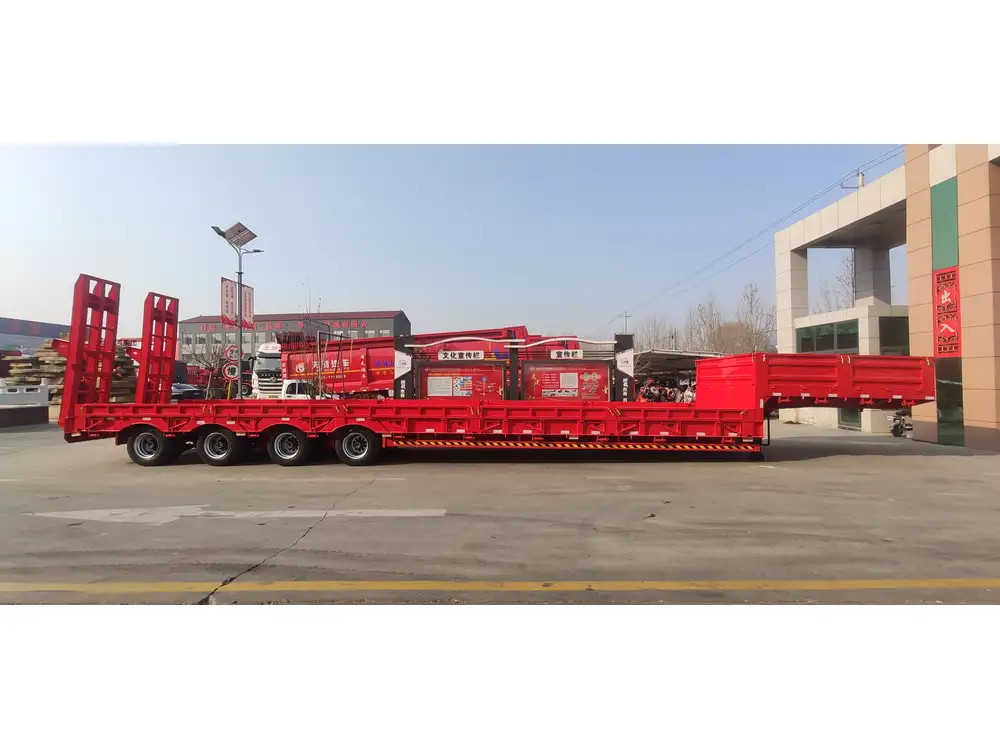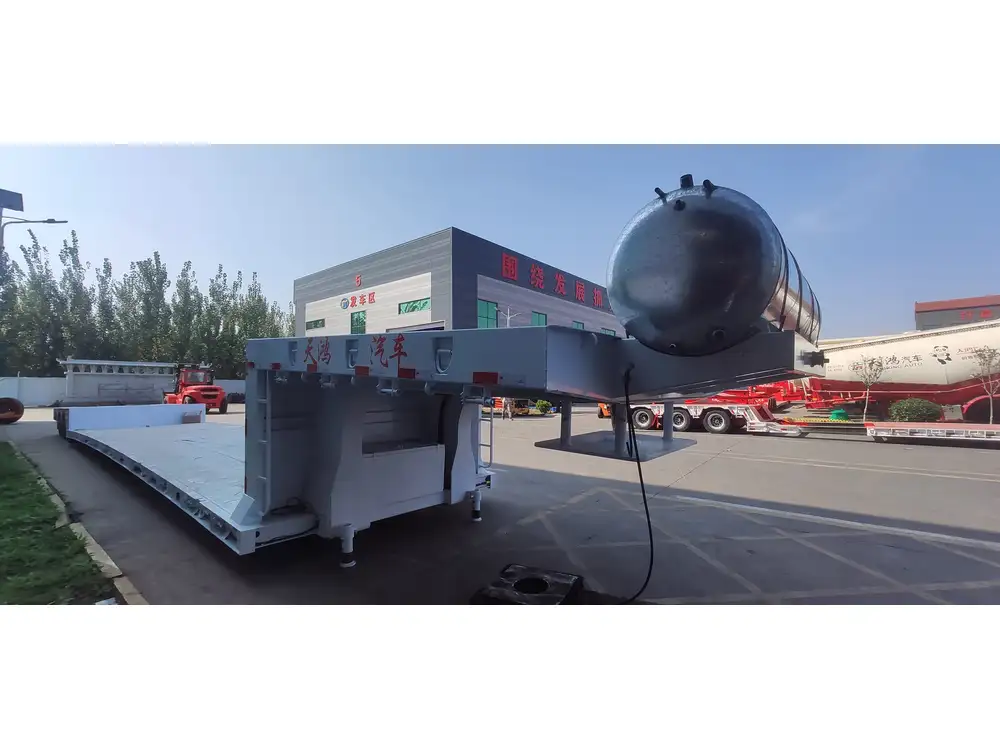When delving into the realm of transportation logistics, especially in the freight industry, it’s essential to grasp the terminology that defines various vehicles and their functionalities. A question that often arises among newcomers and even seasoned professionals is: What is a semi truck called without a trailer? While the answer may seem straightforward at first glance, it encapsulates more than just a term; it opens a discussion about vehicle types, operational efficiencies, and cutting-edge industry practices. This guide aims to provide a comprehensive understanding of semi trucks, their components, and how they operate without trailers, ensuring clarity for both novices and experts alike.
Understanding the Basics: The Terminology Explained
Before we proceed deeper into the world of semi trucks, it is crucial to clarify the key terminology associated with these vehicles. In formal terms, a semi truck is typically referred to as a tractor when it operates independently of a trailer.
Table of Terms
| Term | Definition |
|---|---|
| Semi Truck | A combination of a tractor and a trailer. |
| Tractor | The front unit that provides power, mostly referring to the semi truck without a trailer attachment. |
| Trailer | The towed part of the truck that carries cargo. |
| Bobtail | A term used when the tractor operates without a trailer attached. |
| Chassis | The framework that supports the vehicle, which can also refer to the tractor alone. |

The Functionality of a Tractor Without a Trailer
When discussing a tractor operating on its own—most commonly referred to as bobtailing—it is imperative to assess the vehicle’s functionality and performance dynamics. Bobtail trucks, or tractors without trailers, have several applications:
Positional Transportation: Bobtailing often occurs when a truck has delivered its load and the driver needs to return to a distribution center or pick up another load.
Routine Maintenance: Occasionally, maintenance or inspections require the tractor to be driven separately to a service center without a trailer, allowing for easier access and less cumbersome maneuvering.
Light Loads: In specific circumstances, bobtailing can also include light freight where the load can be accommodated directly onto the tractor itself.
Why Do Truckers Bobtail?
Understanding the driving factors behind bobtailing is pivotal in comprehending the overall logistics involved in freight transportation. The most significant motivations include:
Cost Efficiency: Utilizing a tractor without a trailer can reduce fuel consumption, especially over short distances—thereby lowering operational costs.
Time Management: Streaming operations to ensure trucks are utilized efficiently leads to optimal routing and scheduling, which is critical for the success of transport companies.
Versatility: Tractors often need to navigate urban environments with narrow streets where maneuvering a full semi truck may be impractical.
Bobtailing: Pros and Cons
While bobtailing has its advantages, especially in terms of flexibility and efficiency, it is essential to consider the drawbacks as well.

Advantages of Bobtailing
Increased Mobility: Without a trailer, tractors become more agile, making it easier to navigate tight spaces and urban areas.
Fuel Economy: A bobtail truck consumes less fuel compared to a fully loaded semi due to reduced weight and drag.
Lower Wear and Tear: Driving a lighter vehicle can reduce wear on tires and other components, potentially lowering maintenance costs.
Disadvantages of Bobtailing
Limited Cargo Capacity: Bobtail trucks cannot transport goods like a full semi, which may hinder a company’s ability to maximize revenue per trip.
Stability Issues: A tractor without a stabilizing trailer can be less stable, making it more susceptible to tipping in certain conditions or while making sharp turns.
Regulatory Considerations: Different jurisdictions may have varying regulations regarding weight limits that can affect how tractors are used depending on their load.
Comparing Bobtailing to Conventional Semi Truck Operations
A critical examination of the operational dynamics between bobtailing and conventional semi truck usage provides insights into industry practices and decision-making.

Comparison Chart
| Aspect | Bobtailing | Full Semi Truck Operation |
|---|---|---|
| Load Capacity | Limited (only tractor load) | Full trailer load |
| Fuel Efficiency | Higher (lighter weight) | Lower due to heavier loads |
| Maneuverability | Excellent | Moderate |
| Operational Cost | Generally lower | Can be higher |
| Usage Frequency | Occasional | Frequent during freight runs |
Considerations for Truck Operators
Truck operators must weigh the benefits and drawbacks of bobtailing in their day-to-day operations. Here, we outline several considerations for maximizing efficiency and safety.
1. Training and Skills Development
Ensuring that drivers are well-trained in bobtail operations is vital. This training should focus on the nuances of handling a tractor without a trailer, emphasizing stability during turns and safety on the road.

2. Maintenance Protocols
Regular maintenance checks are crucial for bobtail trucks. Prioritizing hydraulic systems, brakes, tires, and fuel efficiency measures should be routine to uphold safety standards.
3. Fuel Management
Adopting fuel-saving techniques, such as reducing speeds during bobtail trips, engaging in aerodynamic practices, and maintaining proper tire pressure can enhance overall efficiency.
Environmental Impact of Bobtailing
In an age where sustainability and environmental consciousness are critical focal points, understanding the ecological implications of semi truck operations becomes essential.
Reduced Emissions: Bobtailing generates fewer greenhouse gases due to lower fuel consumption, contributing positively to the environment.
Regenerative Practices: By optimizing routing and minimizing unnecessary trips, operators can further reduce their carbon footprints and improve overall sustainability.

Conclusion: The Landscape of Semi Trucks
In summation, the terminology and operational dynamics surrounding what is commonly referred to as a semi truck without a trailer—particularly the role of the tractor or its function as a bobtail—offers significant insights into the logistics landscape. From enhancing mobility and fuel efficiency to understanding regulatory frameworks, the knowledge gained from evaluating bobtailing is invaluable for both freight companies and truck operators.
As the logistics industry continues to evolve, embracing the versatility of tractors operating independently remains paramount. By adopting a balanced approach to freight management, operators can enhance sustainability, engage in cost-effective practices, and navigate the challenges posed by the ever-changing landscape of transport logistics.
Understanding the life of a semi truck, both with and without a trailer, is essential for anyone involved in the transport industry, thus empowering you with the knowledge necessary to make informed decisions that impact your operations significantly.



